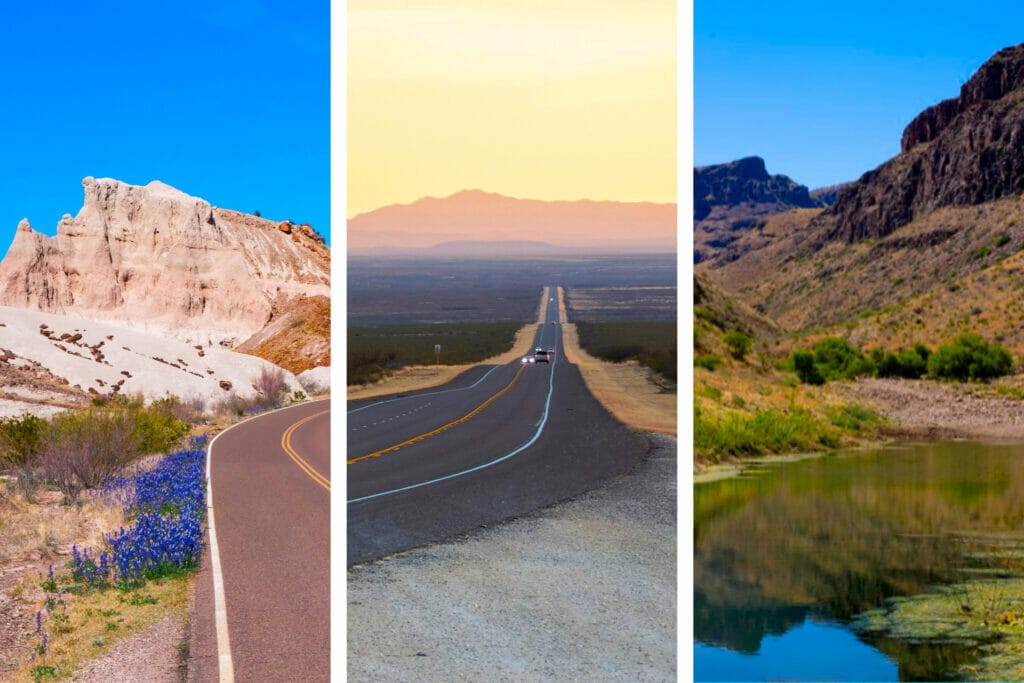While Texas is often associated with vast plains and sprawling cities, it’s also home to a surprising number of awe-inspiring mountain ranges.
From the rugged beauty of the Guadalupe Mountains to the picturesque hills of the Hill Country, Texas offers a diverse and captivating mountainous landscape that is waiting to be explored.
In this guide, we will take you on a virtual journey through the breathtaking mountains of Texas.
We’ll uncover their unique geological features, delve into the fascinating flora and fauna that call these peaks home, and share stories of the adventurous spirit that has shaped the history of these mountainous regions.
Whether you’re a nature lover, a hiking enthusiast, or simply curious about the natural wonders of Texas, enjoy this guide to Texas mountains, including mountains near Texas, mountain ranges in Texas, the highest point in Texas and more.
GET A FREE TEXAS GUIDEBOOK WITH LOCAL TIPS!
With 71 pages of helpful travel tips and the “best of” Texas lists, this is your ad-free key to your Texas trip.
Are there mountains in Texas?
Before we dig into this post, you’re probably wondering, “does Texas have mountains?”
And the answer is, yes, it totally does! Okay, it’s not the Alps or similar to other mountainous regions of the US like Colorado, but it certainly does have mountains and you’d be surprised how tall the tallest mountain in Texas is.
1. Guadalupe Peak: highest peak in Texas and
highest mountain in Texas
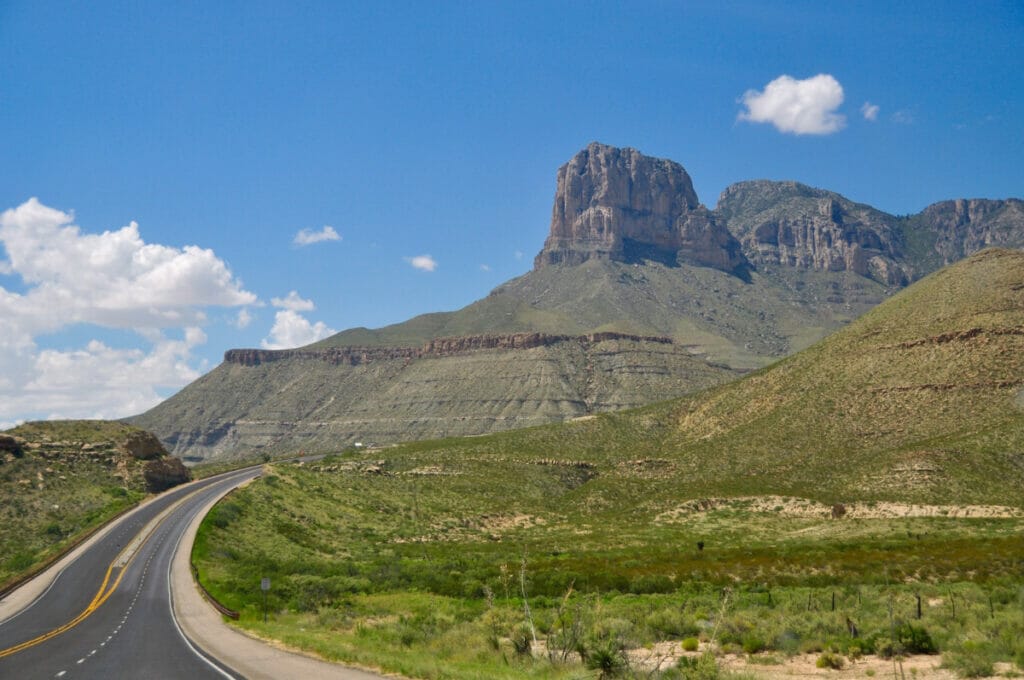
Guadalupe Peak, located in Texas, is an incredible mountain that stands tall and proud.
It’s the highest peak in the entire state, reaching a height of 8,751 feet!
Imagine standing on top of the world, surrounded by breathtaking views of the vast wilderness below.
People from all over the world come to challenge themselves and conquer this mighty peak.
Hiking up Guadalupe Peak is like embarking on an exciting adventure.
The trail is filled with rocky paths, tall trees, and amazing wildlife.
You might even spot birds soaring through the sky or cute little critters scurrying around.
As you make your way up, the air gets thinner and the hike becomes more challenging, but don’t worry!
There are resting spots along the way where you can catch your breath and admire the stunning scenery.
Finally, when you reach the top, you’ll be rewarded with a sense of accomplishment like no other.
The panoramic view of the surrounding mountains and valleys is simply awe-inspiring.
2. Emory Peak

Emory Peak, nestled in the breathtaking Big Bend National Park of Texas, is a must-visit destination for adventure enthusiasts and nature lovers.
Rising 7,825 feet above sea level, it stands as the highest point in the park, offering a challenging yet rewarding hiking experience.
Embarking on the hike to Emory Peak, you’ll traverse scenic trails surrounded by awe-inspiring desert landscapes, rugged canyons, and vibrant flora and fauna.
As you ascend, the trail becomes steeper and more demanding, testing your endurance and determination.
Along the way, you’ll encounter fascinating geological formations and breathtaking panoramic views that stretch as far as the eye can see.
3. El Capitan
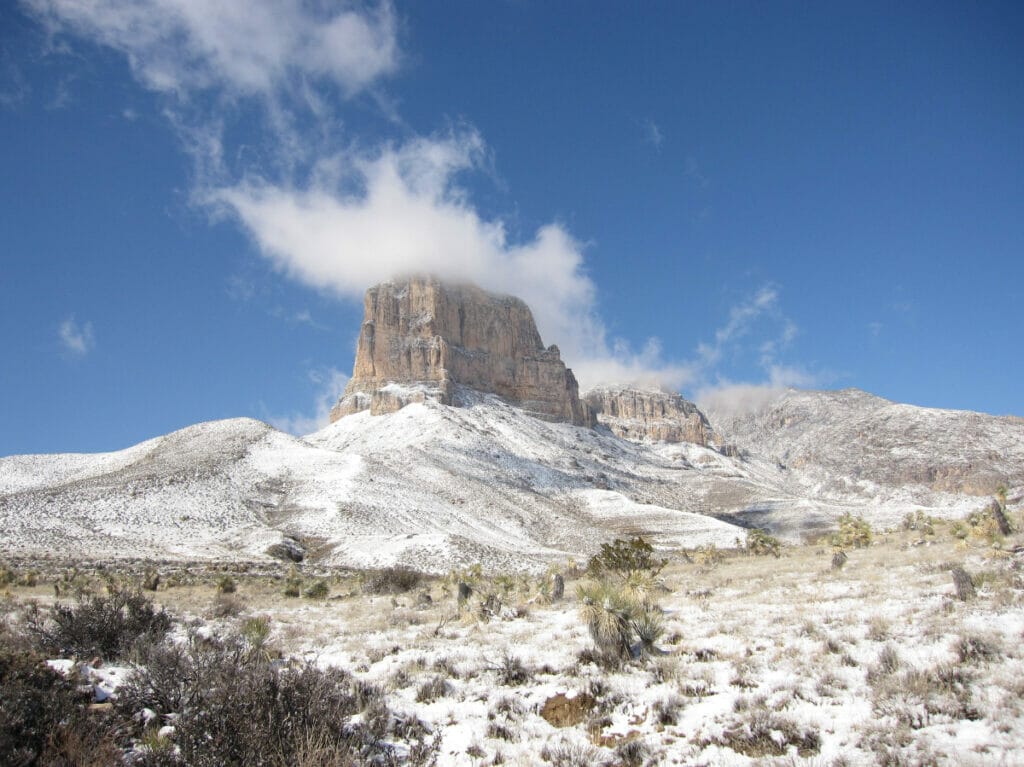
El Capitan, situated in the mesmerizing Guadalupe Mountains National Park of Texas, stands tall as an iconic natural landmark that captivates adventurers and outdoor enthusiasts alike.
This magnificent limestone peak, rising to an elevation of 8,085 feet, is a sight to behold and offers a thrilling climbing experience for those seeking an adrenaline rush.
Scaling the vertical face of El Capitan is a challenge that requires strength, skill, and courage.
As you embark on this epic ascent, you’ll find yourself surrounded by rugged cliffs, breathtaking canyons, and an abundance of diverse wildlife.
The climb demands precise technique, careful planning, and a deep understanding of rock formations.
Each handhold and foothold requires focus and determination as you steadily make your way towards the summit.
4. Mount Livermore
Mount Livermore is a majestic peak located in the scenic Davis Mountains of Texas.
Rising to an impressive height of 8,378 feet, it offers breathtaking views and a thrilling adventure for outdoor enthusiasts.
Hiking to the summit of Mount Livermore is an exhilarating experience.
As you make your way along the trail, you’ll be surrounded by the beauty of nature, with lush vegetation and diverse wildlife dotting the landscape.
The trail can be challenging at times, with steep sections and rugged terrain, but the sense of accomplishment you’ll feel when you reach the top is truly rewarding.
From the summit, you’ll be treated to panoramic vistas that stretch for miles, showcasing the rugged beauty of the Texas landscape.
5. Baldy Peak
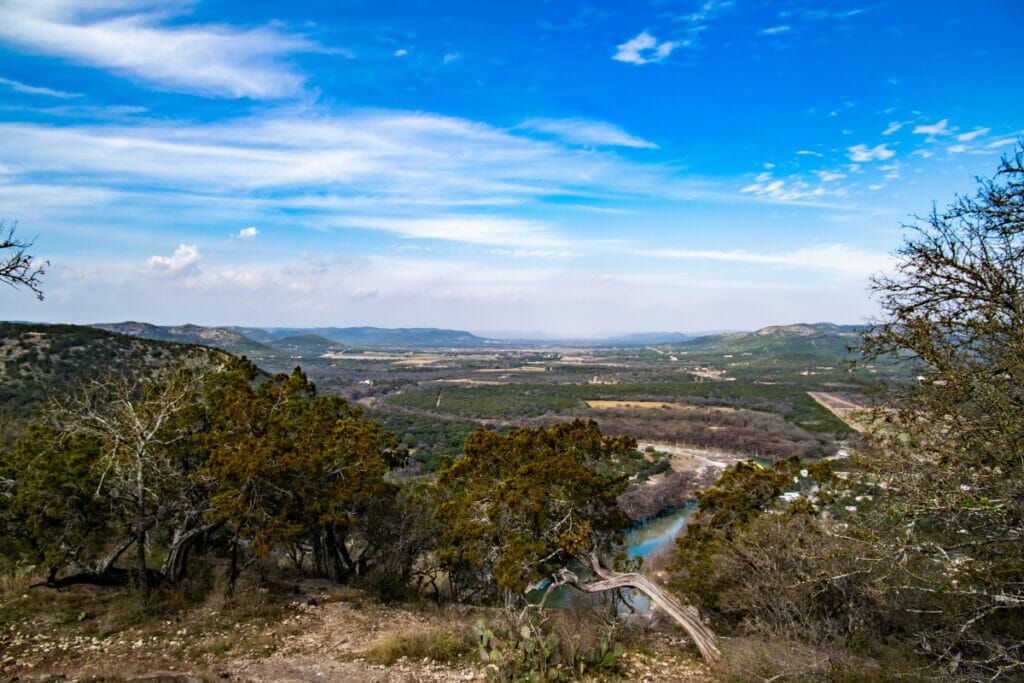
Baldy Peak, located in the stunning Guadalupe Mountains of Texas, is a prominent mountain that stands tall at an elevation of 8,378 feet.
It is a popular destination for outdoor enthusiasts and nature lovers seeking a thrilling adventure and breathtaking views.
Ascending Baldy Peak is an exciting and challenging endeavor.
The trail to the summit offers a mix of rocky terrain, steep sections, and scenic landscapes that make for a memorable hiking experience.
As you hike higher, you’ll be surrounded by the rugged beauty of the Guadalupe Mountains, with its unique flora and fauna.
Reaching the summit of Baldy Peak rewards you with unparalleled panoramic views that stretch as far as the eye can see, allowing you to marvel at the vast expanse of Texas wilderness.
Hiking Baldy Peak provides an opportunity to immerse yourself in nature, test your physical abilities, and appreciate the awe-inspiring beauty of the Guadalupe Mountains.
6. Mount Locke

Mount Locke, nestled in the Davis Mountains of West Texas, is a notable peak that reaches an elevation of 6,791 feet.
It is renowned for its significant role in astronomy and is home to some of the world’s most advanced observatories.
Atop Mount Locke sits the McDonald Observatory, a world-class research facility and a mecca for astronomers.
The observatory boasts a collection of state-of-the-art telescopes, including the Hobby-Eberly Telescope, which is one of the largest optical telescopes in the world.
The clear, dark skies of Mount Locke offer optimal conditions for stargazing and astronomical research, attracting scientists and enthusiasts from around the globe.
7. Chinati Peak
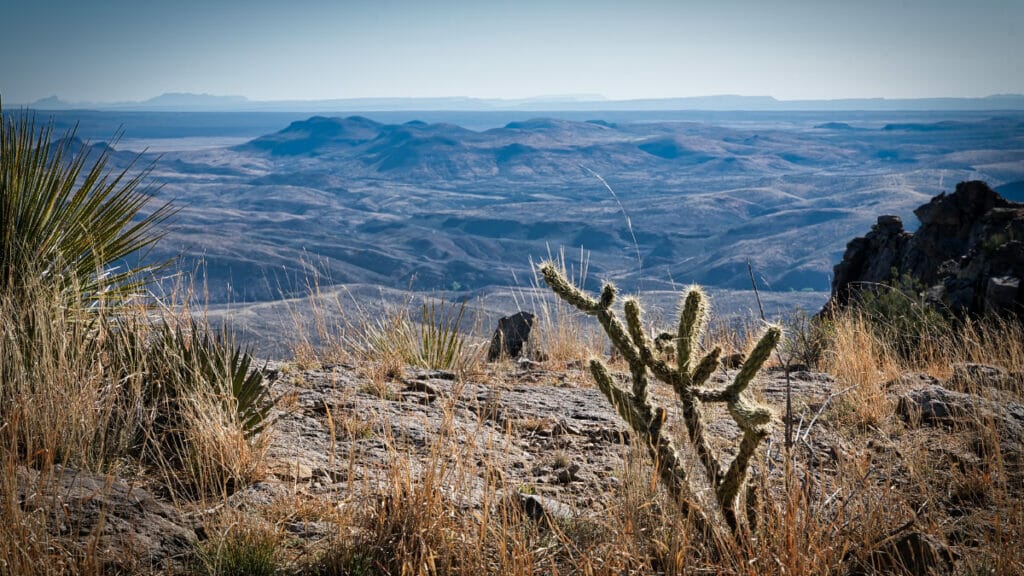
Chinati Peak, located in the Chinati Mountains of West Texas, is a prominent summit that stands at an elevation of 7,728 feet.
It is known for its rugged beauty, diverse wildlife, and its connection to the region’s rich history.
The peak gets its name from the nearby Chinati Springs, which were once an important water source for Native American tribes and early settlers.
Today, Chinati Peak is a popular destination for outdoor enthusiasts and hikers seeking adventure and breathtaking views.
The challenging yet rewarding hike to the summit offers panoramic vistas of the surrounding desert landscape, showcasing the vastness and grandeur of the Chihuahuan Desert.
Exploring Chinati Peak provides an opportunity to connect with nature and witness the resilience of life in this arid environment.
Along the trail, you may encounter unique plant species adapted to survive in the harsh desert conditions and catch glimpses of wildlife such as mule deer, javelinas, and a variety of bird species.
8. Sierra Blanca Peak
Sierra Blanca Peak, located in Hudspeth County, Texas, is a majestic mountain rising to an elevation of 6,927 feet.
It stands as one of the highest peaks in Texas and offers stunning panoramic views of the surrounding Chihuahuan Desert and nearby mountain ranges.
The peak derives its name from the Spanish term “sierra blanca,” which translates to “white mountain.”
This name is fitting as the peak often features a dusting of snow during the winter months, creating a picturesque sight against the backdrop of the desert landscape.
Sierra Blanca Peak is part of the larger Sierra Blanca Mountain Range, which spans across both Texas and New Mexico.
For outdoor enthusiasts, Sierra Blanca Peak offers a challenging yet rewarding hiking experience.
The trail to the summit winds through rugged terrain, with stunning rock formations and diverse vegetation along the way.
As you ascend, you’ll witness the changing landscape, from desert scrub to alpine vegetation.
From the summit, hikers are rewarded with breathtaking views of the vast expanse of the West Texas desert, stretching out as far as the eye can see.
9. North Franklin Mountain
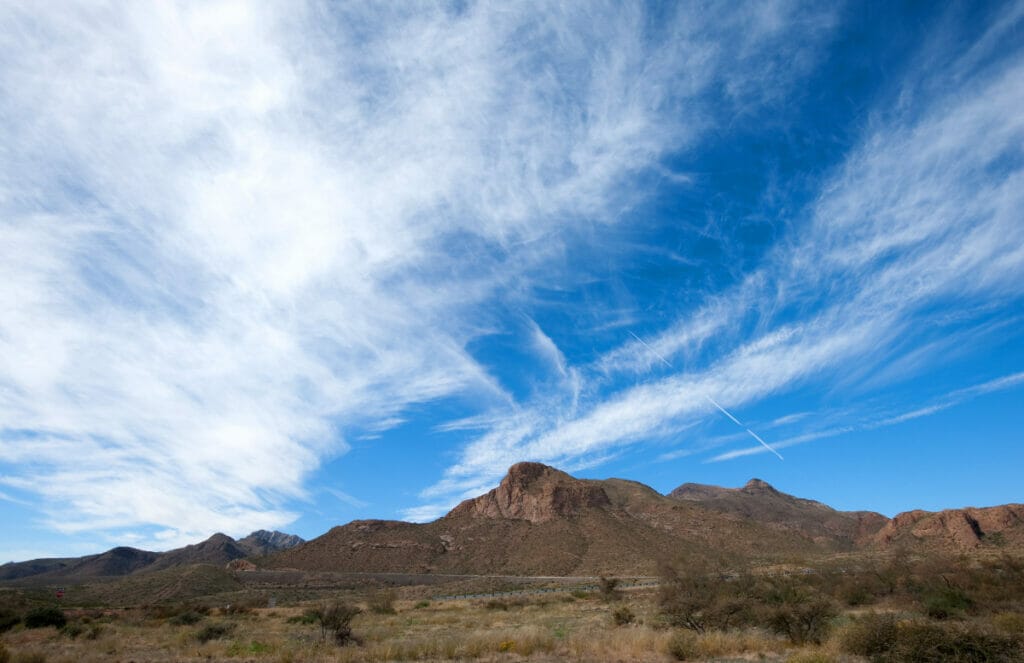
North Franklin Mountain, located in El Paso County, Texas, is an impressive peak that stands at an elevation of 7,192 feet, making it the highest peak in the Franklin Mountains State Park.
It is a prominent landmark in the region and offers outdoor enthusiasts a challenging and rewarding hiking experience.
The mountain is known for its rugged terrain, steep slopes, and breathtaking views.
Hiking to the summit of North Franklin Mountain involves traversing rocky trails, navigating through desert vegetation, and ascending steep sections.
As you make your way up, you’ll be surrounded by the unique flora and fauna of the Chihuahuan Desert, including cacti, yucca plants, and desert wildlife.
Reaching the summit of North Franklin Mountain is an accomplishment that rewards hikers with panoramic views of the surrounding desert landscape, the city of El Paso, and the Rio Grande Valley.
On a clear day, you can even catch a glimpse of the mountains in neighboring Mexico.
The summit provides a serene and peaceful atmosphere, offering a chance to reflect on the beauty of nature and the vastness of the Texas landscape.
10. Guadalupe Mountains
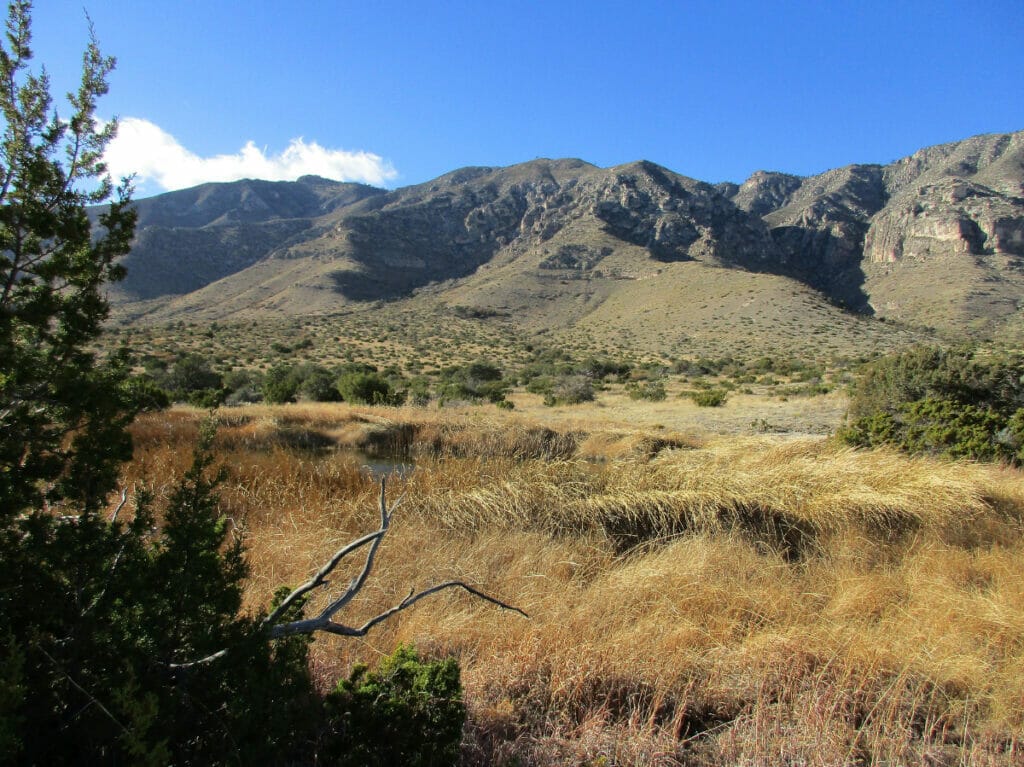
The Guadalupe Mountains in Texas are a stunning and majestic range that captivates visitors with their rugged beauty and diverse ecosystems.
Located in the western part of the state, the Guadalupe Mountains National Park is home to the highest peak in Texas, Guadalupe Peak, standing tall at an elevation of 8,751 feet.
These mountains are a haven for outdoor enthusiasts, offering a wealth of opportunities for hiking, backpacking, camping, and wildlife viewing.
The park features an extensive trail system that leads adventurers through canyons, pine forests, and scenic viewpoints.
One of the most popular hikes is the Guadalupe Peak Trail, which takes you to the summit of Guadalupe Peak, rewarding you with breathtaking panoramic views of the surrounding desert and mountains.
Beyond the natural beauty, the Guadalupe Mountains hold significant geological and historical importance.
The region showcases ancient fossilized reefs that date back millions of years, providing insights into the Earth’s past.
Additionally, the area has a rich cultural history, with evidence of Native American settlements and early ranching communities.
11. Shumard Peak
With its commanding position on the Western escarpment of the Guadalupe Mountains, Shumard Peak takes its place as Texas’ third highest point, soaring to an impressive elevation of 8,615 feet above sea level.
This lofty summit, devoid of any designated trails, offers a picturesque spectacle that can be best observed from U.S. Highway 62/180 to the west of the park.
For a more distant but equally captivating view, the Salt Basin Dunes serve as an excellent vantage point to appreciate the grandeur of this natural wonder.
12. Elephant Mountain
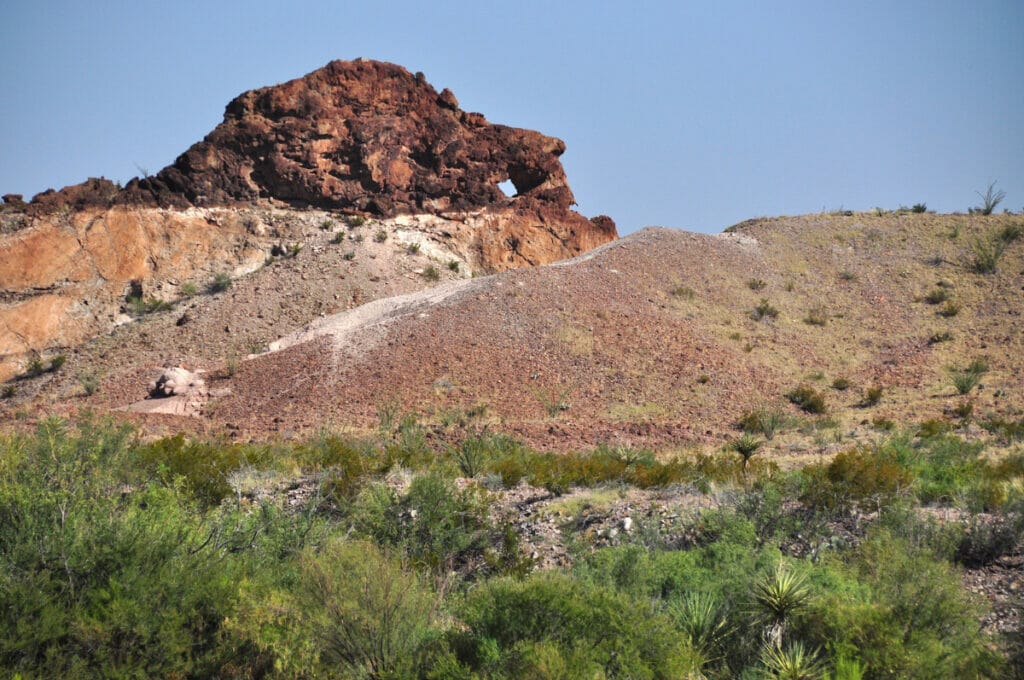
Perched majestically in the rugged terrain of the Chihuahuan Desert, Elephant Mountain stands as a prominent landmark in West Texas.
This iconic mountain, located within Big Bend Ranch State Park, showcases its unique shape that bears a striking resemblance to an elephant’s silhouette, hence its name.
Rising to an elevation of 5,632 feet, Elephant Mountain offers breathtaking panoramic views of the surrounding desert landscape and the vast expanse of the Rio Grande.
Hiking enthusiasts will find Elephant Mountain to be a captivating destination, with several trails providing access to its summit.
The Elephant Mountain Trail is a popular choice, guiding adventurers through rocky slopes and diverse vegetation.
Reaching the top rewards hikers with an awe-inspiring vista, where the vastness of the desert unfolds before their eyes, displaying the raw beauty of this untamed region.
Elephant Mountain truly stands as a testament to the natural wonders that Texas has to offer.
13. Chisos Mountains
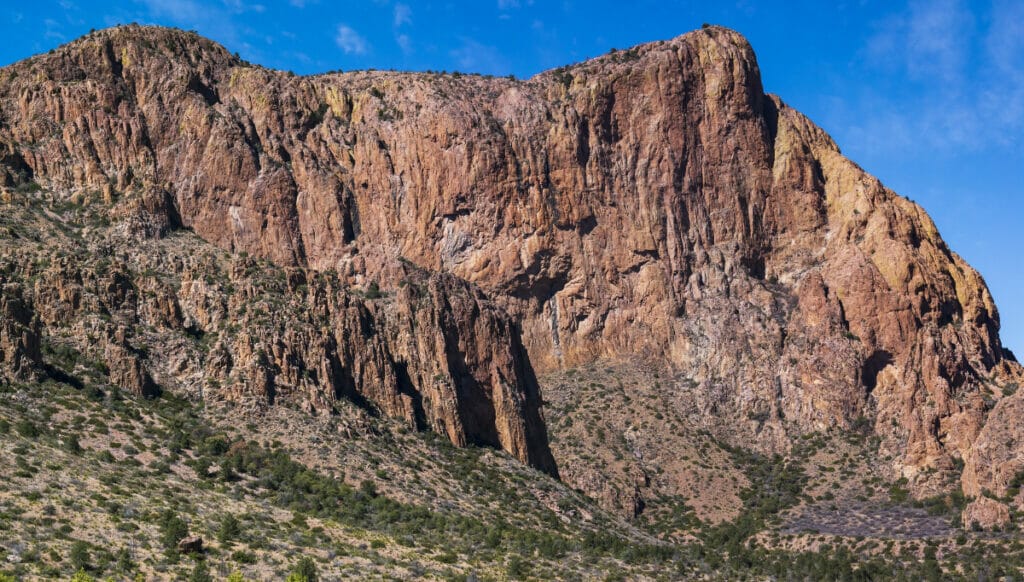
Nestled within the expansive Big Bend National Park, the Chisos Mountains rise proudly, captivating visitors with their grandeur and rugged beauty.
These ancient mountains, located in southwest Texas, offer a diverse range of ecosystems and breathtaking vistas.
With the tallest peak, Emory Peak, reaching an elevation of 7,825 feet, the Chisos Mountains provide a true mountain experience in the heart of the desert.
Hiking trails wind through the picturesque landscapes, inviting adventurers to explore the diverse terrain and uncover hidden treasures along the way.
The Window Trail, a popular choice among visitors, leads hikers through a narrow canyon to a stunning viewpoint overlooking the Chihuahuan Desert below.
Along these trails, one can encounter towering rock formations, lush canyons, and peaceful meadows, painting an unforgettable portrait of natural wonders.
14. Hunter Peak
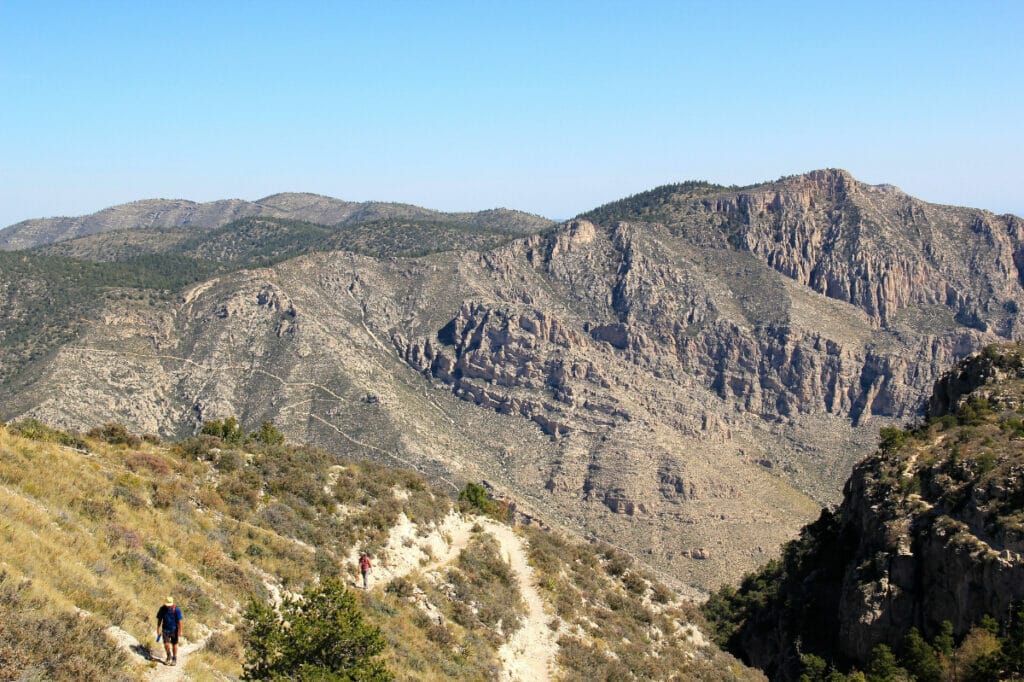
Hunter Peak, located in the Chisos Mountains of Big Bend National Park, stands as a prominent landmark and a testament to the majestic beauty of the region.
With an elevation of 8,368 feet, it is the second highest peak in Texas, offering a rewarding and challenging adventure for outdoor enthusiasts.
The journey to the summit of Hunter Peak takes hikers through rugged terrain, rewarding them with breathtaking panoramic views of the surrounding desert landscape.
The trail to Hunter Peak winds through diverse ecosystems, showcasing the unique flora and fauna of the Chisos Mountains.
As hikers ascend, they may encounter vibrant wildflowers, ancient juniper trees, and curious wildlife such as deer and birds.
Along the way, the trail presents occasional rocky sections and steep inclines, testing the endurance and determination of those who embark on this adventure.
15. Beach Mountains
The Beach Mountains in southwestern Culberson County, Texas, rise majestically on privately owned land just north of Van Horn.
With a maximum elevation of 5,827 feet (1,776 m) above sea level, these circular mountains dominate the surrounding desert landscape.
They are remnants of ancient sedimentary rocks dating back millions of years.
Despite the challenging terrain, the Beach Mountains are home to a variety of resilient desert vegetation, including Yucca, creosote, mesquite, and cacti.
Wildlife enthusiasts will be delighted to know that the mountains are inhabited by the rare desert bighorn sheep, which were reintroduced into the area in the early 1990s.
Named after J. H. Beach, an early settler in the region, the Beach Mountains offer a fascinating geological and natural heritage.
Visitors can marvel at the rugged beauty and unique flora and fauna while exploring this remarkable landscape.
The Beach Mountains are a testament to the enduring forces of nature and the remarkable resilience of life in the harsh desert environment.

